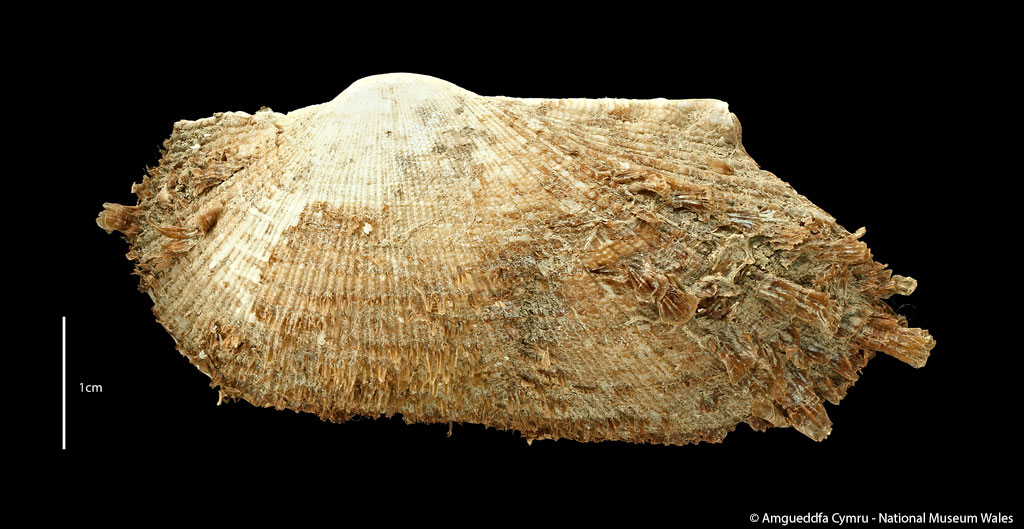 0021886 |
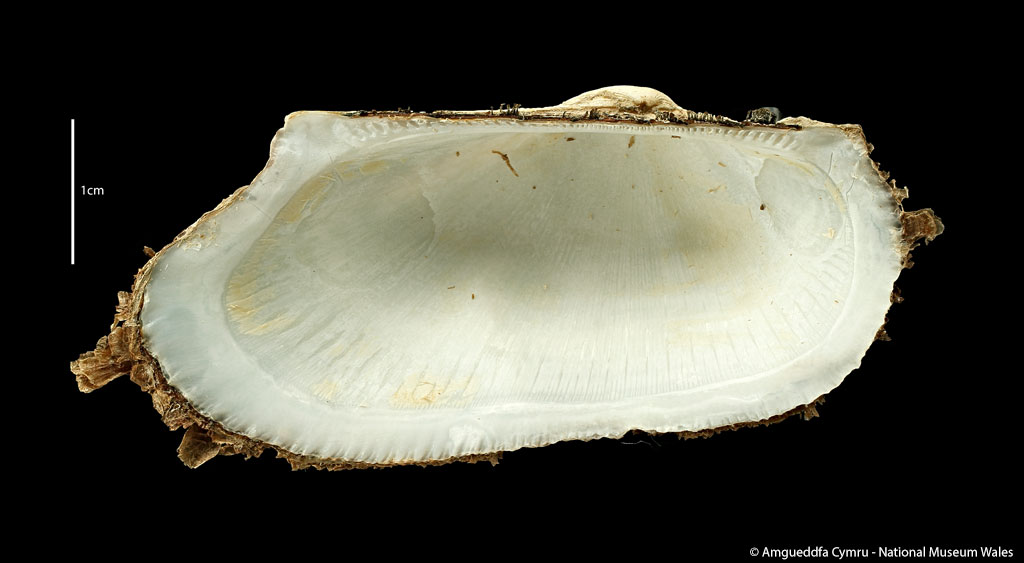 0021887 |
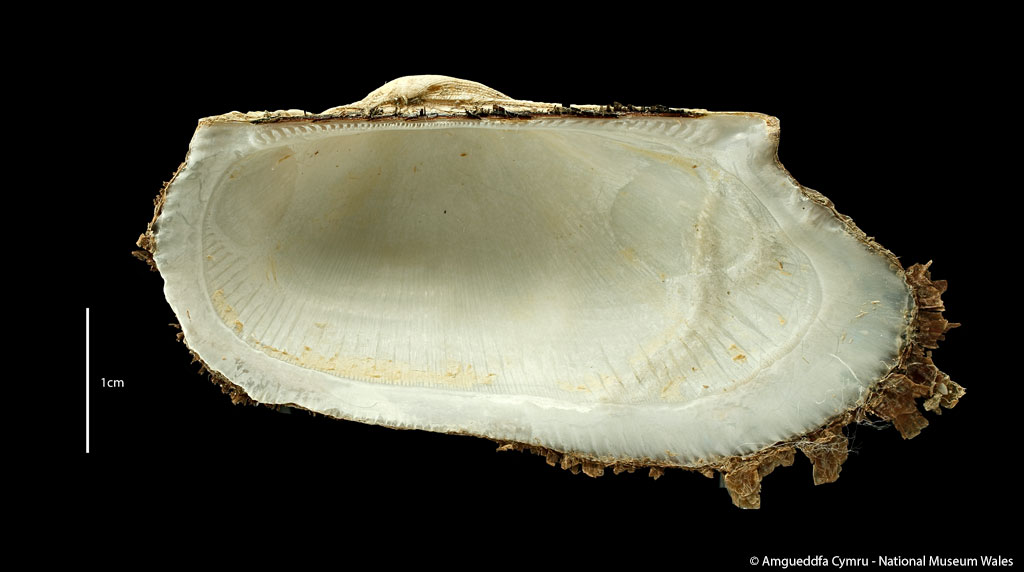 0021888 |
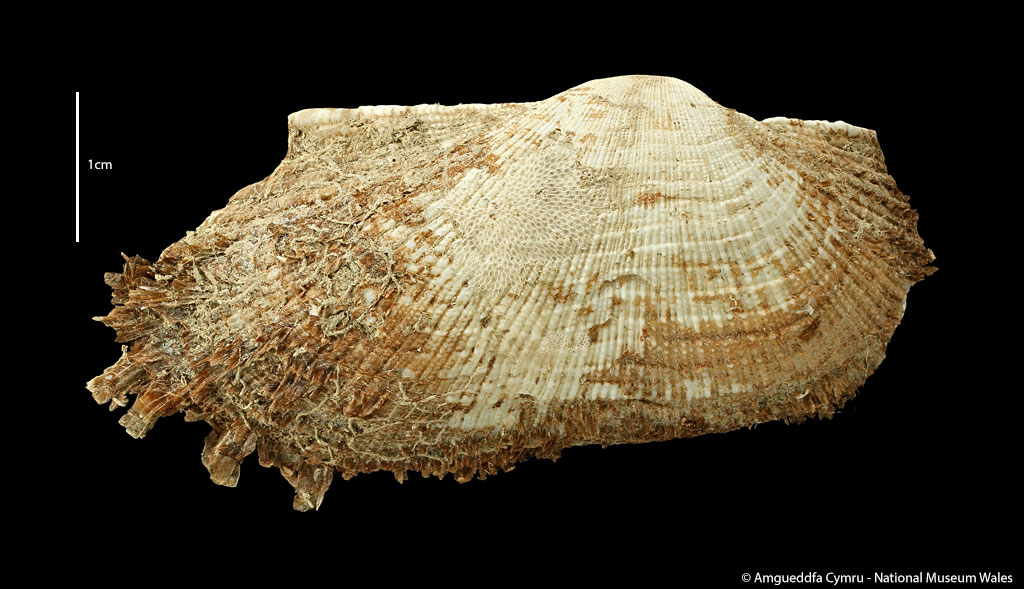 0021889 |
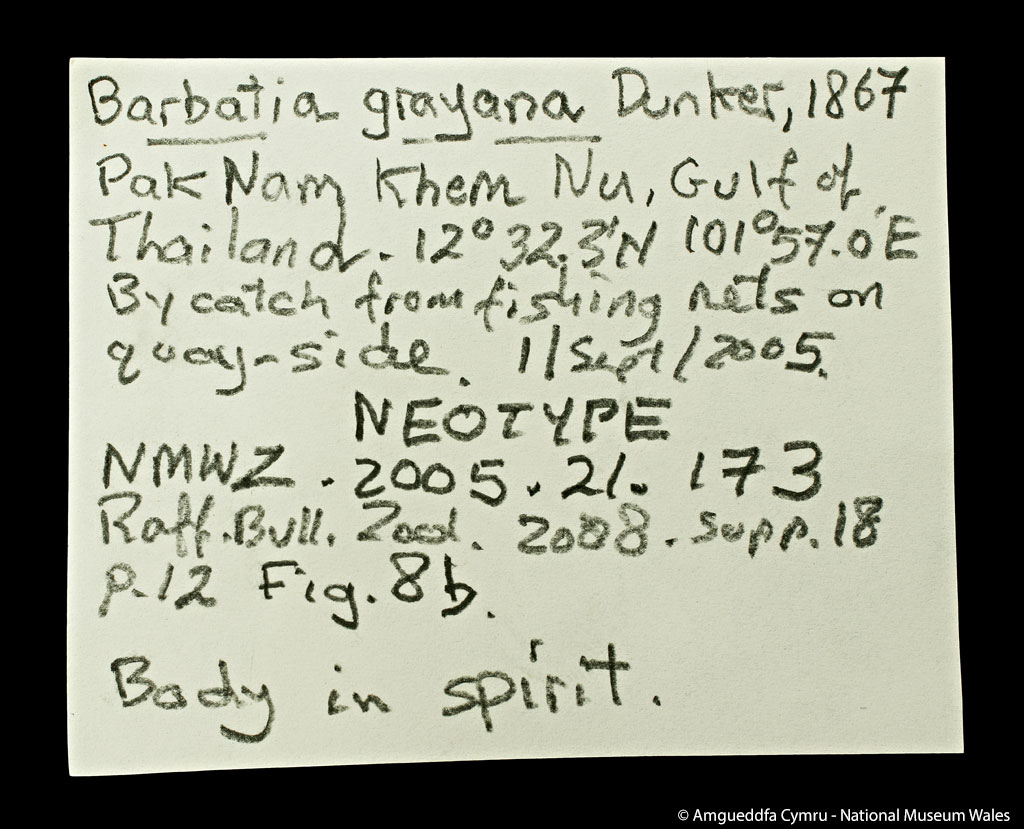 0021890 |
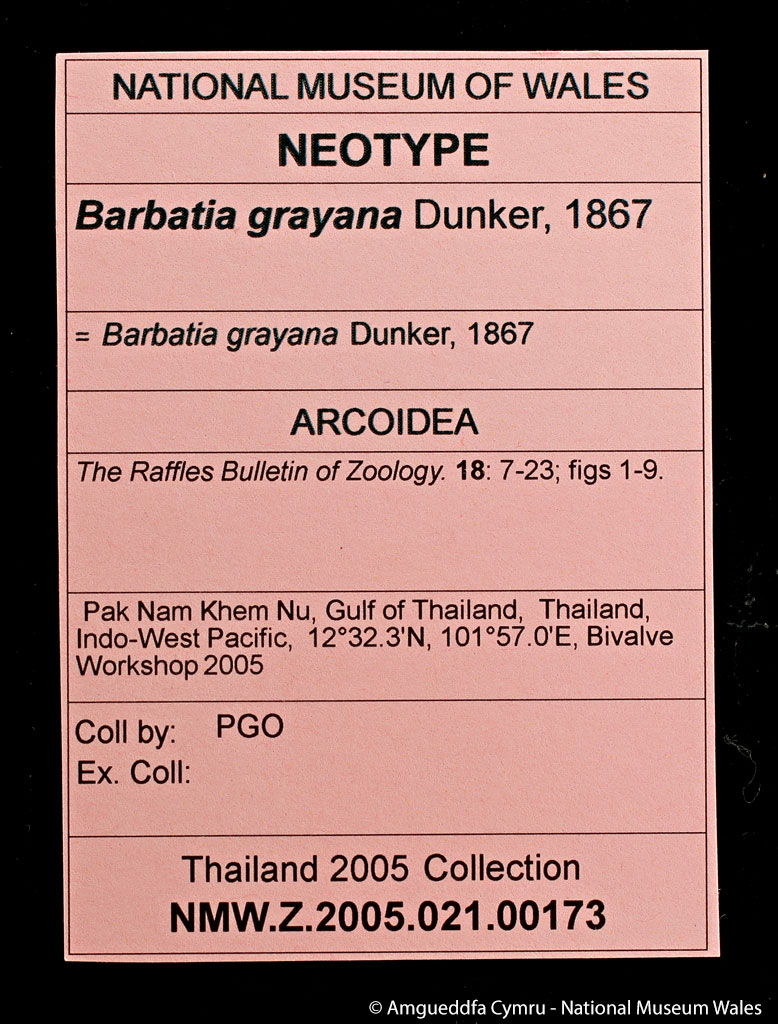 0021891 |
Barbatia grayana Dunker, 1867
Bivalvia : Arcoidea : Arcidae| Type Status: | Neotype |
| Collection: | Thailand 2005 |
| Accession No.: | NMW.Z.2005.021.00173 |
| Preparations: | Dry & wet |
| No. of Specimens: | 1 sh, body in spirit |
| Locality: | Pak Nam Khem Nu, Gulf of Thailand, Thailand, Indo-West Pacific, 12°32.3'N, 101°57.0'E, Bivalve Workshop 2005 |
| Collecting Details: | Bivalve Workshop 2005, 1/9/2005, PGO |
References
Reference |
Citation |
Reference available |
|---|---|---|
| Dunker, W. 1858-1870. Novitates Conchologicae Mollusca Marina. Beschreibung und Abbildung Neuer oder Wenig Gekannter Meeres-Conchylien, series 2. Theodore Fischer, Cassel. 144pp [92; pl. 31, figs 5-7] | Figured Original Description |
|
| Agüera García, A. & Oliver, P. G. 2008. Species discrimination in seven species of Barbatia (Bivalvia: Arcoidea) from Thailand with redescription of B. grayana (Dunker, 1858). The Raffles Bulletin of Zoology. 18: 7-23; figs 1-9. [12; fig. 5d, 8b] | Cited Figured Type Designation Current Name |
Detailed Locality
| Verbatim Locality |
| Ex Indiis misit clar. Gräfe [from Indies sent by Gräfe] |
| Point Locality: | Pak Nam Khem Nu |
| Country: | Thailand |
| Station: | |
| Grid ref./Coordinates: | 12°32.3'N, 101°57.0'E |
| Region: | Gulf of Thailand, |
| Sea Region: | Indo-West Pacific. |
| Altitude: | |
| Depth: |
| Expedition: | Bivalve Workshop 2005 |
| Ex. Collection: |
| Collecting date: | 1/9/2005 |
| Collected by: | PGO |
Classification
Kingdom |
Phylum |
Class |
Order |
Superfamily |
Family |
|---|---|---|---|---|---|
| Animalia | Mollusca | Bivalvia | - | Arcoidea | Arcidae |
Remarks
Agüera García & Oliver, 2008 regarding neotype designation: The original shell described by Dunker could not be located. It was stated by Dunker (1867) to be part of the Museum Godeffroy and this collection was largely incorporated into the Zoological Museum, University of Hamburg. It is likely that along with much of the dry molluscan collection, the type was destroyed during World War II. The collections in the Zoological Museum, Berlin, and The Natural History Museum, London, were also checked because Dunker types are also located in these museums. With the lack of material, a neotype designation is made here. This course of action is taken because the original figure (Fig. 8a) clearly shows the fine radial sculpture and broad periostracal bristles typical of the new material at hand, giving confidence to the application of the name B. grayana.
